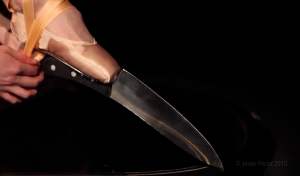“Saturday, March 24,1984. Shermer High School, Shermer, Illinois, 60062. Dear Mr. Vernon, We accept the fact that we had to sacrifice a whole Saturday in detention for whatever it was we did wrong. What we did *was* wrong. But we think you’re crazy to make us write an essay telling you who we think we are. What do you care? You see us as you want to see us – in the simplest terms, in the most convenient definitions. You see us as a brain, an athlete, a basket case, a princess and a criminal. Correct? That’s the way we saw each other at 7:00 this morning. We were brainwashed.”
These are the opening lines to my favorite movie of all time: The Breakfast Club. This 1985 teenage drama is, in my opinion, pure cinematic perfection. (I could be biased… But who wouldn’t be after watching it 30+ times?) The movie tells the story of five seniors in high school who land themselves in a Saturday detention for various reasons that are explained as the movie unfolds. Claire is the rich popular girl, and Andrew is a varsity wrestler. John Bender is the bad-boy delinquent, Brian is the socially-oblivious dork, and Allison is the reclusive “basket case.” At first, they all keep to themselves with the exception of Claire and Andrew, who are both popular and thus in the same crowd. Bender entertains himself by provoking and teasing the other students. This eventually leads to conversations where the students get to know personal information about each other. They push each other to their limits. By the end of the day, the characters have let their guards down and have allowed everyone to see the kind of people they are behind the guise of their respective social groups.
For those of you who have not seen The Breakfast Club, I look at it as the more mature parallel to Mean Girls. They both had similar effects on me, anyway. However, where Mean Girls remained a comedy, The Breakfast Club is more of a drama, and covers far more serious topics such as drug use, suicide, and sex. The film illustrates the variety of pressures that can control a teenager’s life. It made me realize that every teen, regardless of appearance or social status, deals with the same problems. This priceless bit of insight changed the way I look at people in my school and community. I do not see people as “jocks” or “druggies;” instead I look at them and I wonder what their life is like. Infiltrating the wall everyone puts up around themselves helps me to understand people better. I empathize. Once I realized that I didn’t have to feel intimidated or inhibited just because someone is in a different social group, it allowed me to connect with so many more people. As Andrew Clark puts it: “We’re all pretty bizarre. Some of us are just better at hiding it, that’s all.”











